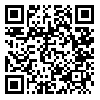BibTeX | RIS | EndNote | Medlars | ProCite | Reference Manager | RefWorks
Send citation to:
URL: http://ijict.itrc.ac.ir/article-1-223-en.html
E-learning environments are being used more efficiently by the rapid growth in internet and multimedia technologies. Adaptive learning is a kind of learning environment which provides individual learning. It can customize the learning style according to the individual's personality and characteristics. Although there are a lot of elearning systems having adaptive learning feature, they do not satisfy all adaptive learning aspects. This paper proposes a new method which tries to help learners find educational contents adapted to their personalities in an efficient manner. Our proposed method has four essential parts: 1) It finds out learner's features by MBTI and Kolb learning style tests or Bayesian networks. 2) Then It tries to select the most appropriate adaptive learning objects with 0/1 knapsack problem in a limited amount of time determined by learner. 3) An ant colony optimization algorithm is proposed to solve 0/1 knapsack problem efficiently. 4) Selected learning objects are then sequenced in order to preserve the prerequisites. Also we created a software application based on this method called BehAmooz for learners to find and comprehend the educational contents effectively. The results obtained by experimentations showed that this method could satisfy most of the students.
| Rights and permissions | |
 | This work is licensed under a Creative Commons Attribution-NonCommercial 4.0 International License. |




